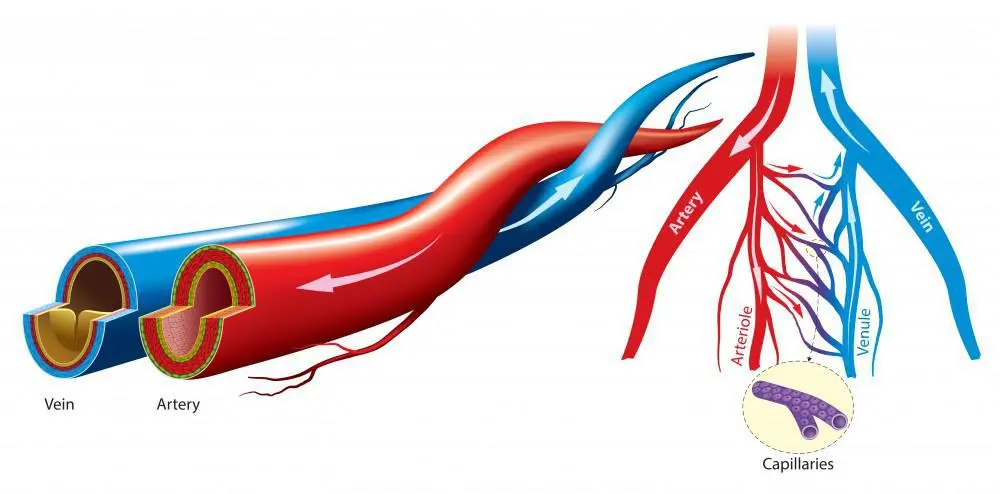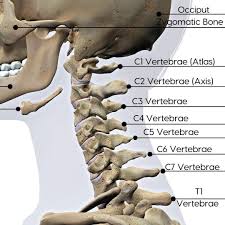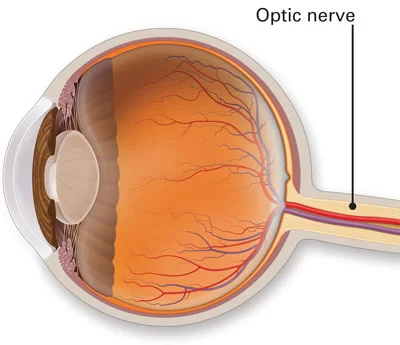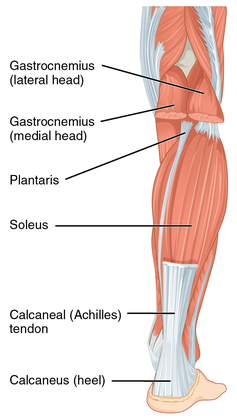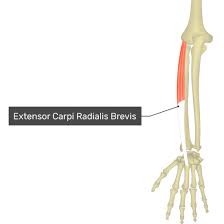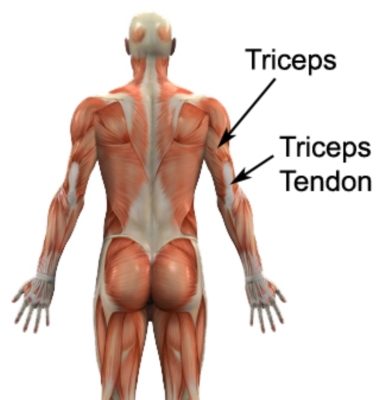Artery Vs Vein
Arteries and veins are fundamental components of the circulatory system, playing distinct yet complementary roles in the transportation of blood throughout the body.
While both are blood vessels, they exhibit notable differences in structure, function, and the composition of blood they carry.
Table of Contents
Introduction:
The blood vessels in your body cover more than 60,000 km. There are three different kinds of blood vessels in this incredible circulatory system: capillaries, veins, and arteries. Every one of them is crucial to the blood’s movement throughout your body.
Within the cardiovascular system, blood vessels can be either veins or arteries. Blood is transported from the heart by an artery and returned to it via a vein.
For blood to be transported throughout the body, blood arteries are necessary. The body’s tissues are able to operate because blood provides them with oxygen and other nutrients.
The cardiovascular system is made up of blood arteries and the heart. There are numerous vessels in this system, each with a unique structure and purpose.
What are Artery and Veins?
Arteries:
Your heart pumps blood with oxygen out of your body through arteries. Their muscular layer and strong walls keep your blood flowing. Vascular diameters can reach up to two centimetres, or the width of a nickel. They are your body’s biggest kind of blood vessel.
The biggest artery in your body is the aorta. Blood is transported to your organs by the aorta from your heart. Smaller branching of arteries are referred to as arterioles. The size of arteries and arterioles varies to keep your blood pressure within normal range.
Veins:
Veins are commonly found near the skin’s surface and transport deoxygenated blood to the heart. Because veins lack the muscle layer that arteries have, they must rely on valves to maintain blood flow. Venules, the tiny blood vessels that give rise to veins, eventually enlarge to become full-sized veins as they approach the heart.
Difference between Artery and Vein
| Artery | Veins |
| The heart pumps blood with oxygen out of your body through arteries | Transport deoxygenated blood to the heart |
| Smaller branching of arteries are referred to as arterioles. | Venules, the tiny blood vessels that give rise by veins, |
| Situated deep inside the muscle | Are situated nearer the skin’s surface. |
| Have extremely thick and strong walls | Possess narrow and weak walls |
| Transport blood to the organs from the heart | Direct the blood flow towards the heart. |
| Transport blood with oxygen (apart from the pulmonary artery). | Transport deoxygenated blood that contains a thin layer of muscle |
| Possesses an internal layer of dense muscle tissue. | Veins do not have dense muscle tissue. |
| Possess no valves (apart from the pulmonary artery) | Have valves to maintain blood flow |
Anatomy:
There are three layers to veins and arteries:
Tunica adventitia: The collagen and elastin that make up a blood vessel’s outer layer are called the tunica adventitia. Depending on the type of vein or artery, this layer permits the vessel to enlarge or constrict. Blood pressure regulation is aided by this function.
Tunica media: The tunica media is a blood vessel’s middle layer. The tunica media is made up of muscle fibres and elastin. Depending on the kind of blood vessel, different amounts of muscle or elastin are present. For instance, the tunica media of elastic arteries has a low concentration of muscle fibres.
Tunica intima: The term “tunica intima” describes the blood vessel’s inner layer. It generally consists of tissues and elastic membranes and may have valves that aid in the proper direction of blood flow.
The blood vessels, called arteries, are in charge of transporting blood that is high in oxygen from the heart to the body. Blood vessels, called veins, return the body’s low-oxygen blood to the heart, where it is reoxygenated.
Veins have valves, not arteries. To maintain blood flow toward the heart, veins require valves. The legs and limbs are especially in need of these valves. They resist gravity so that blood does not flow backwards.
Because the pressure from the heart maintains the blood flow through arteries in a single direction, arteries do not require valves.
What artery and veins do?
The blood vessels that carry blood throughout the body are called arteries and veins. Veins return blood to the heart, while arteries transport blood away from it.
As blood flows to and from the heart, it forms two systems. The blood circulation system is made up of these two systems.
Organs, tissues, and cells receive oxygen and other essential compounds through systemic circulation.
The left ventricle sends blood that is rich in oxygen to the rest of the body through the systemic arteries. The now low-oxygen blood is then gathered in systemic veins and sent to the right atrium.
New oxygen enters the bloodstream through the pulmonary circulation.
The right ventricle sends blood with low oxygen levels to the lungs through the pulmonary arteries.Blood that is rich in oxygen is subsequently returned to the heart through the left atrium by means of pulmonary veins.
Types of arteries:
Three different kinds of arteries exist:
1. Elastic arteries
The huge vessels that emerge from the heart are called elastic arteries. They consist of the aorta and the pulmonary artery, for instance. The principal artery that removes blood from the heart is the aorta.
To keep the blood flowing throughout the body, the heart must pump blood out firmly. For elastic arteries to manage blood surges, they must be adaptable. They enlarge as the heart pumps blood out of them.
Elastic arteries are among the various tissues that contain the protein elastin, which promotes elasticity.
2. Muscular arteries
Muscular arteries, like the femoral or coronary arteries, receive blood supply from elastic arteries.
Muscular artery walls are composed of smooth muscle fibres. The muscles in these arteries allow them to dilate and constrict. The amount of blood that flows through the arteries is regulated by these size changes.
3. Arterioles
The tiniest kind of artery is an arteriole. Via networks of capillaries, they transfer blood from larger arteries.
Smooth muscle is another component of the outer layer of arterioles that permits contractions and expansions.
Types of veins:
Veins and arteries are composed of the same layers; however, veins can store more blood due to their thinner walls and lack of muscle. Approximately 70% of the body’s blood is normally found in veins at any given moment.
The smallest vein is called a venule. To hold a lot of blood, their walls are extremely thin. They transmit low-oxygen blood straight into veins from arteries via capillaries. After that, the blood flows along a network of veins that get bigger and stronger until it returns to the heart.
Two of the main types of blood vessels in the body are veins and arteries. The blood is distributed throughout the body through these vessels. They are a component of two enclosed tube systems that start and finish at the heart. These tube systems are either:
- Pulmonary: The pulmonary vessels are arteries that carry blood with low oxygen content from the right ventricle of the heart to the lungs. Blood rich in oxygen is returned to the left atrium of the heart through the pulmonary veins.
- Systemic: The arteries known as the systemic vessels transport blood rich in oxygen from the left ventricle of the heart to the tissue in all part of body. The blood with low oxygen content is subsequently returned to the right atrium of the heart via the veins.
Systemic veins can be further divided into either:
- Deep veins: These veins are typically found in muscular tissue and have a nearby matching artery. A one-way valve may be present in these veins to stop blood from flowing backward.
- Superficial veins: These veins are located near the skin’s surface and do not have an adjacent artery bearing the same name. Another possibility is a one-way valve.
- Connection veins: Blood can move from the superficial to the deep veins through these tiny veins.
- Pulmonary veins: Blood that has been oxygenated by the lungs is sent to the heart via the pulmonary veins. The pulmonary veins in each lung are divided into a right and a left one.
- Systemic Veins: The body’s systemic veins are found in the arms, trunk, and legs up to the neck. They return blood that has lost oxygen to the heart.
Conditions related to Arteries and Veins:
The human body’s veins and arteries can develop a variety of issues, some of which are common:
Atherosclerosis: Atherosclerosis is a disorder that causes the artery walls to thicken and become clogged with plaque, which makes it more difficult for blood to pass through. Heart attack, stroke, and elevated blood pressure can result from this.
Varicose veins: This is a disorder where the veins in the legs swell and twist to the point where the skin shows them. In addition to being painful, varicose veins can cause blood clots.
Deep vein thrombosis: The disorder known as deep vein thrombosis causes a blood clot to form in the deep veins, generally in the legs. It might be detrimental and result in pulmonary embolism if blood clots get dislodged and travel to the lungs.
Aneurysm: An arterial wall bulging or ballooning is known as an aneurysm. Although they can develop elsewhere in the body, aortic aneurysms are the most frequent type.
Raynaud’s illness: A disorder known as Raynaud’s illness causes the blood vessels in the fingers and toes to constrict, decreasing blood flow and producing discomfort, tingling, and numbness.
Peripheral artery disease (PAD): The accumulation of plaque, or fatty deposits, on the inside lining of the arteries, can lead to peripheral artery disease (PAD), which can limit or obstruct blood flow to the limbs.
Numerous factors, including age, lifestyle choices, and heredity, might contribute to these issues. Depending on how severe the issue is, they may require surgery, medication, or lifestyle modifications for treatment. Seeking advice from a Vascular and Endovascular Specialist is crucial if you suspect you have any of the symptoms.
Summary
Blood is transported throughout the body by both arteries and veins, two different types of blood vessels. The direction of blood flow, wall thickness, valve existence, and anatomical placement are just a few of their main distinctions.
They are comparable to one other, though, in that they are both a part of the circulatory system, contain blood, have smooth muscle surrounding them, and are lined with endothelial cells. They are also a part of the network that facilitates blood flow throughout the body.
Both of these are critical to the body’s general health and wellbeing, and preserving both is necessary to keep the body functioning properly.
FAQs
With each beat, the heart distributes blood throughout the body, giving each cell in the body access to oxygen. The blood returns to the heart after carrying the oxygen. For the blood to absorb more oxygen, the heart then pumps it to the lungs. This cycle is repeated incessantly.
The tubes of muscle that carry blood are known as arteries and veins, or blood vessels. Arteries carry blood from the heart to every part of the body. Your body is made up of an intricate network of veins and arteries.
Blood is removed from the heart by arteries and returned to it by veins. Veins typically have thinner walls relative to their lumen, a bigger diameter, and a higher blood volume capacity. Compared to veins, arteries are smaller, have walls that are thicker relative to their lumen, and are under more pressure when carrying blood.
The blue colour of the skin is a result of the way light is absorbed and scattered by it. Veins seem blue because skin, especially in lighter-toned people, can reflect blue and green wavelengths and absorb red ones. Veins are only viewed as being blue; they are not truly blue.
Vein walls are trilayered, just like artery walls. There is less smooth muscle and connective tissue even though all the layers are there. Because of this, vein walls are thinner than artery walls, which is related to the fact that blood in veins experiences lower pressure than blood in arteries.
Reference
- Kapadia, S. (2024, March 12). Veins vs. Arteries: What’s the Difference? Dr. Sumit Kapadia. https://www.drsumitkapadia.com/post/veins-vs-arteries/
- What is the difference between arteries and veins? Rela Hospital. (2023, March 16). Rela Hospital. https://www.relainstitute.com/blog/what-is-the-difference-between-arteries-and-veins/
- Frothingham, S. (2018, April 13). Artery vs. Vein: What’s the Difference? Healthline. https://www.healthline.com/health/artery-vs-vein
- Nicola, S. (2021, December 13). What differentiates Veins, Capillaries, and Arteries? WebMD. https://www.webmd.com/heart/difference-between-arteries-veins-capillaries

